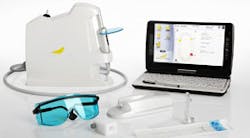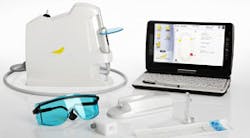Study compares Canary System with bitewing radiography
New clinical research findings announced during the International Association of Dental Research (IADR) meeting in Boston indicated that the Canary System exhibited a strong performance compared to bitewing radiography for the detection of proximal caries.
Thirty subjects from a mixed population of caries risk patients were involved in the study. The authors of the study found the sensitivity/specificity of The Canary System to be 0.92/0.78 vs. 0.67/0.54 for bitewing radiography. The authors of the study concluded that the Canary System is more accurate than bitewing radiography for proximal caries diagnosis.
Dr. Ben Amaechi from the University of Texas Health Science Center in San Antonio led an independent clinical study.
“Bitewing radiographs and visual examination have been considered the gold standard for caries detection but this study along with others demonstrate that The Canary System should become the next gold standard for the detection and monitoring of tooth decay,” said Dr. Stephen Abrams, president of Quantum Dental Technologies Inc., the manufacturer of the Canary System.
The Canary System, with its crystal structure diagnostics, allows oral health professionals to detect, image, track, and monitor tooth decay on all tooth surfaces, beneath opaque sealants, around the margins of restorations, and detect cracks in teeth.
The accompanying Canary Cloud enables dentists to view and manage this data in an online environment, track Canary usage in the office, and keep up-to-date on Canary products and clinical news.
A company statement said, “With the Canary System, caries detection is not simply shining a light on a tooth surface but it’s about gathering accurate information on the status of the tooth’s crystal structure and then storing it to allow ongoing analysis and monitoring.”
Visit www.thecanarysystem.com or email [email protected] to request additional information.


